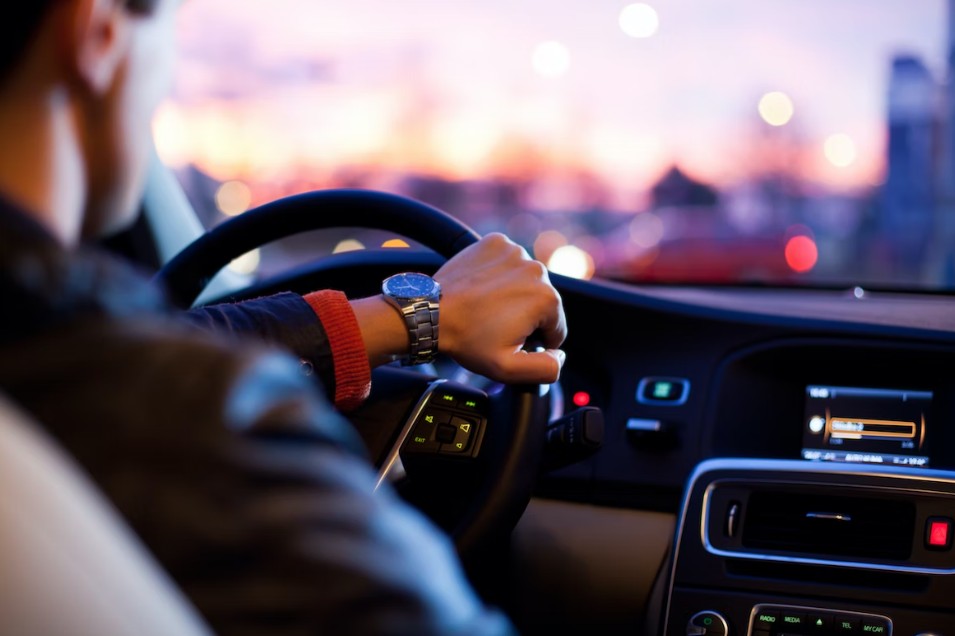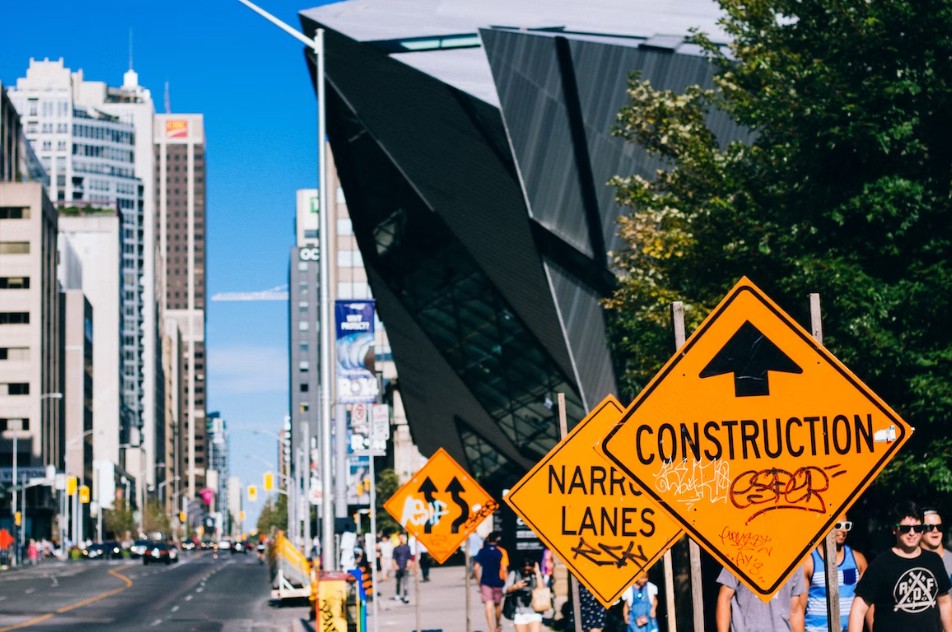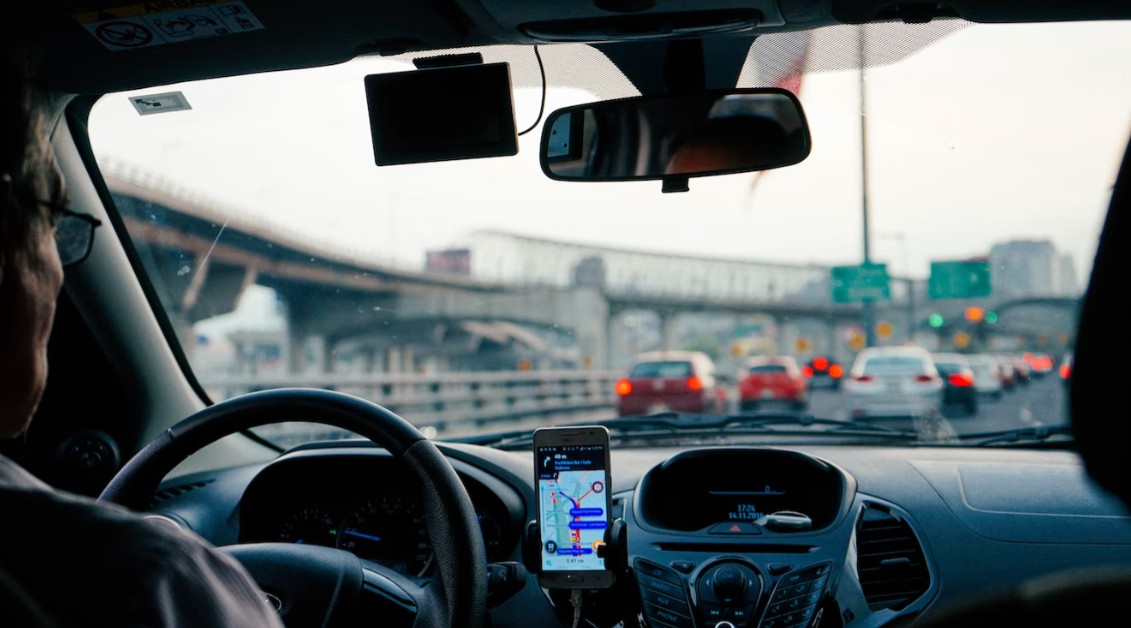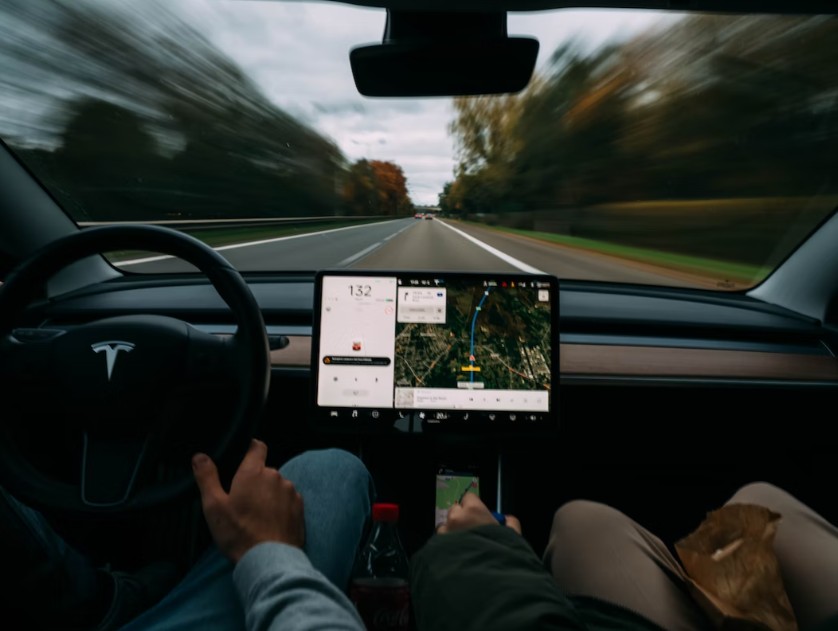You’re driving along, and suddenly, the red lights on the traffic signal are flashing. You look at them and realize that the light has turned yellow and is about to turn red again. You tap your brakes and prepare for a quick stop. But as you do, you realize that you have no idea if it’s safe to proceed. The signal is just flashing lights in an array of colors that don’t mean much to you because they all look the same. This may sound like a nightmare scenario. But, it happens to millions of people every year with color blindness (color vision deficiency).
We’ll explore what color blindness is and why it can be dangerous when driving. We’ll also share tips for how Deuteranopes can overcome this obstacle. They have type-2 colorblindness. These tips will help them become safer drivers!
Deuteranopia and its effects on color perception
Deuteranopia is a type of color blindness that affects the green and red cones in your eyes. It’s one of the most common forms of color blindness, affecting about 1 in 10 men and 1 in 200 women. Deuteranopia can occur on its own or alongside other types of color vision deficiency.
People with deuteranopia see shades as muted compared to people with normal vision. They have trouble distinguishing between similar shades. For example, red and green, yellowish greens vs brownish greens (e.g., olive), blue-green vs purple-blue (e.g., periwinkle).
Importance of safe driving for Deuteranopic drivers

euteranopia is a type of color blindness. People with it have trouble seeing some colors. Because of this, they may have trouble recognizing traffic lights and other visual cues in the road. This can make it more difficult for them to drive safely.
As a Deuteranope, you may find yourself using other ways to recognize road objects besides their color. For example, you might tell if an object is moving based on its shape and size. Or, perhaps you rely heavily on sounds from cars around you, such as honking horns.
Understanding the Challenges
The most common form of color blindness is deuteranopia. It affects about 1 in 10 men and 1 in 200 women, making it the most common type of color vision deficiency. The second most common form is protanopia (1% of males) and then tritanopia (0.005% of males).
Deuteranopia is caused by a missing or defective gene. It makes it hard for your eyes to tell apart reds, greens, yellows, oranges, and browns. These colors sit next to yellow on the color wheel below. The issue is that most traffic lights are red, green, and amber. This means that if you have deuteranopia, it’s difficult for you to tell when the light has turned from red to green. You might be able to tell by looking at other cars around you or by using auditory cues like honking horns.
The impact of Deuteranopia on traffic signals, road signs, and other visual cues

Deuteranopia can cause difficulty in identifying red and green objects. It can also cause issues with identifying yellow and red objects. Also, people with Deuteranopia can’t tell between shades of green. This may lead them to misread traffic signals and road signs. It raises the risk of accidents and injuries.
Deuteranopes often struggle to tell if brake lights are on. This is due to their inability to tell blue from green. This may cause not only unsafe driving conditions but also dangerous situations. They must make quick decisions such as avoiding an accident at high speeds or stopping suddenly due to another vehicle braking ahead. This could result in rear-end collisions.
A person with Deuteranopia can’t tell red shades apart. This may cause them to misread traffic signals and signs. It raises the risk of accidents and injuries.
Also, people with Deuteranopia can’t tell different shades of yellow apart. This may lead them to misread traffic signals and road signs. It raises the risk of accidents and injuries.
Common situations that can be challenging for Deuteranopic drivers
It’s important to be aware of the most common situations that can be challenging for Deuteranopes. These include identifying traffic signals and road signs, as well as the risk of accidents and legal consequences.
Traffic lights: Some people with color blindness have difficulty seeing red and green lights at night, so they may not realize when it’s safe or unsafe to cross the street. This can lead to serious accidents when drivers make assumptions about what other drivers see. If you’re driving with color blindness, learn how it affects your ability to see traffic lights. This will help you avoid danger on the road.
Road signs: Signs like stop signs aren’t always easy for people with Deuteranopia because they rely on distinguishing between reds (stop) and greens (go). If these colors look similar in this type of vision deficiency, it could lead someone who has trouble seeing them clearly into an accident.
Driving in bad weather:It can also be difficult for deuteranopes because they may not be able to tell whether the pavement is wet or dry because it looks similar. The result could be hydroplaning — when your vehicle bounces across the water on the road instead of going through it — causing loss of control and an accident.
Driving at night:At night, deuteranopes may have trouble seeing road signs and other vehicles at a distance. This can make driving on dark roads dangerous. If you have this type of color blindness, you should try to avoid driving at night as much as possible.
If you’re driving with color blindness, it’s important that you understand how it affects your ability to see traffic lights. This will help you avoid danger on the road.
The risk of accidents and legal consequences

As a Deuteranope driver, you are at increased risk of accidents. This is because your vision is not as clear as those with normal color vision, so you may have trouble seeing colors clearly or telling the difference between colors that look similar. You may also find it difficult to judge speed and distance accurately.
This can be a problem when driving at night or during bad weather conditions because these situations make it more difficult for everyone’s eyesight to work properly regardless of their color blindness condition. When these situations are combined with poor color perception, then there is even more reason why Deuteranopic drivers should take extra care when out on the road!
Tips for Safe Driving
Here are some tips and tricks for safe driving:
1. Use high-visibility clothing – When driving at night, wear bright clothes that make you visible to other motorists. This helps to prevent accidents as other drivers will be able to spot you easily.
2. Pay attention to traffic lights – Traffic lights are usually designed in such a way that they are visible from afar. However, if you have impaired vision due to color blindness, it might be difficult for you to distinguish between red and green lights at night or even at daytime when visibility is poor due to fog or rain. It is therefore important that you ensure that all traffic lights are working properly before crossing an intersection or entering an intersection after stopping at a stop sign or traffic light signal.
3. Avoid driving at night – If possible, avoid driving after dark as this increases your risk of being involved in an accident due to poor visibility or insufficient lighting on the road ahead of you (especially if there are no streetlights).
4.Stay off freeways when possible and avoid busy streets at rush hour if possible. Freeways tend to have higher speeds than city streets, which makes them more dangerous for pedestrians who aren’t paying attention to their surroundings or other drivers who might not be paying attention themselves!
5.Use your mirrors as much as possible, but don’t rely on them entirely. When you are in a car that has tinted windows, it’s more difficult to see out of the back window because of glare from lights behind the car. Be sure to check your mirrors frequently and use them to guide your driving.
Letting others know about the condition
Tell friends and family about your color blindness. As a deuteranope, you may not be able to identify colors as well as others can, but it’s still important for them to know about your condition. This will help them understand why they might not always see color with you. It will also explain when it’s better for them to avoid certain colors!
Tell your doctor about the condition too! They’ll want to watch how your eyesight is changing. They want to help prevent problems from getting worse or causing serious issues. If nothing else, being honest about this early on will make future visits easier (and more productive).
Ask for a referral from an eye specialist once we’ve confirmed that our eyesight needs extra care beyond standard checkups every year or two.. This person should also know about deuteranopia. Then he/she can give advice tailored to help people like us live well despite this vision deficiency.
If you have a pair of color blind glasses that will help correct the problems caused by deuteranopia. If so, these are worth getting! You’ll make it easier to see things in color and will make it appear more vibrant than you do without glasses
Avoiding driving in low-light conditions or unfamiliar areas
If you’re a deuteranope, it’s best to avoid driving at night. Even if you have normal or good color vision, dim light (such as during sunrise or sunset) will reduce your ability to see colors. If you must drive at these times, use extra caution. Pay close attention to other vehicles’ taillights and brake lights. This will make them easier for you to see.
To avoid driving in unfamiliar areas where road signs may not be well-lit or visible from far away due to poor lighting conditions:
Get to know area maps before a trip. That way, you won’t be surprised about where things are on the way.
Consider using GPS if necessary

If you don’t have access to a map or GPS, consider asking someone who does for help identifying where things are located along the way. Avoid driving in unfamiliar areas where road signs may be poorly lit and hard to see from far away due to poor lighting. Get to know the area’s maps beforehand. That way, when it’s time for a trip, there won’t be any surprises about where things are.
Consider using GPS if needed. If you don’t have a map or GPS, ask someone who does for help finding things along the way.
If you get lost, try to stay calm and keep your eyes on the road. Don’t panic or speed up because this could lead to an accident. If possible, stop at a safe place and pull over so that you can get directions from someone who knows where they’re going. If there is no safe place to pull over, it’s okay to drive as slowly as necessary in order to find one.
Carpooling or using public transportation when possible
If you’re a Deuteranope and have been diagnosed with color blindness, then you may have noticed that driving can be quite difficult. However, there are ways to make your commute safer and more comfortable. Carpooling or using public transportation when possible is one of them. This will let you relax on the road. There’s no rush to get home quickly to avoid traffic jams or other issues when driving alone.
Carpooling might not be an option for some reason. Or, it might not work where you live. Another option is taking breaks during the day. Rest your eyes every few hours, especially if they feel strained. If needed, bring sunglasses or hats. Also, bring water bottles with ice for cooling off after time outdoors in hot weather!
Taking breaks and resting the eyes during long drives
Taking regular breaks is a good idea for drivers of all abilities, but it’s especially important for those with color blindness. As you drive and your eyes become tired, they will naturally lose their ability to focus on small details. This can make it difficult for you to see traffic lights or signs that are up ahead.
Take a break every hour or two. If your trip takes longer than an hour, or if you’re tired, take some time off from driving. That way, your eyes can rest and recover their vision.
Rest the eyes by looking away from the road at something far away, like trees or buildings. Or at something close, like hands on the steering wheel or dashboard controls. Look at anything except what’s right in front of them!
Use the rearview mirror to look at signs, traffic lights and other road markers. This will help you focus on those small details without taking your eyes off the road.
Encouragement to prioritize safe driving and seek help if needed
While it can be challenging to drive with color blindness, it’s important to remember that you are not alone. There are many resources available for those who need help with their vision, including eye doctors and support groups. If you have questions about your driving, talk with your doctor. Or, take an online test to see if anything needs fixing.
If you’re ever in a crash while driving due to your condition (or any other reason), stay calm. Stay safe until emergency responders arrive. Call 911 if necessary! Afterward, file an insurance claim. This will compensate both parties for accident damage. Someone else caused this mess through their negligence. The elevator doors opened while they were still inside. They’ll want their own lawyer when we settle these details. So, why not just call one now?
Frequently Asked Question:
Can I with deutan color blindness obtain a driver’s license, and are there any restrictions?
In most countries, including the United States, people with deutan color blindness are eligible for a driver’s license. However, some restrictions may apply. They depend on the severity of the color blindness and the licensing authority’s rules.
For example, in the United States, the Department of Motor Vehicles (DMV) may require a color vision test. It is part of the driver’s license application process. The test may show that the person struggles to tell some colors apart. This may lead to limits on their driving. For example, they may be barred from driving at night or in low light. They may also be barred from driving large vehicles, like trucks or buses.
How can drivers with deutan color blindness ensure they are able to correctly identify traffic signals and signs?
Drivers with deutan color blindness can take certain steps to help ensure they are able to correctly identify traffic signals and signs while driving. Here are some tips:
- Learn the position and shape of traffic signals: While traffic signals typically use red, yellow, and green colors to convey information, they also have specific positions and shapes that can help drivers identify them. For example, the top light on a traffic signal is always red, the middle light is always yellow, and the bottom light is always green. By learning these positions and shapes, drivers with deutan color blindness can better interpret traffic signals.
- Use technology:Color blind contacts are a relatively new technology that is being developed to help individuals with color blindness see colors more accurately.It’s work by selectively filtering out specific wavelengths of light, similar to how colorblind glasses work. it can help drivers with deutan color blindness identify traffic signals and signs
- Get regular eye exams: Regular eye exams can help identify any changes in color vision and ensure that drivers are aware of any potential limitations or restrictions on their ability to drive safely.
Are there any particular road conditions or driving scenarios that are particularly challenging for individuals with deutan color blindness?
People with deutan color blindness may face challenges when driving in certain road conditions or scenarios, particularly those that rely heavily on color coding. Here are a few examples:
- In low light, it may be hard for people with deutan color blindness to tell similar colors apart. This can make it challenging to see and interpret traffic signals and signs.
- Construction zones use temporary signs and signals. They may be less familiar to drivers. Also, these signs and signals rely heavily on color coding to give information. This makes it hard for people with deutan color blindness to interpret them.
- Railroad crossings use flashing lights. They are color-coded to show if a train is coming. However, these lights may be hard for deutan color blind people. They may struggle to interpret them accurately.
- Emergency vehicles, like police cars and ambulances, may use colored flashing lights. They use them to show they are on the road. But, people with deutan color blindness struggle to tell apart the colors used for these lights.
Yes, there are several assistive technologies and tools available that can help drivers with deutan color blindness navigate the roads safely. Here are a few examples:
- Color filters, mostly called colorblind glasses, enhance color contrast. They make it easier for people with deutan color blindness to tell colors apart. For example, yellow filters can help those with deutan color blindness. They see the difference between red and green traffic lights.
- GPS navigation systems can help drivers navigate the roads with visual and audio cues. This is especially true for people with deutan color blindness. They may have trouble with visual cues alone.
- Several mobile apps can help people with color blindness. They help them identify colors in the world around them. This includes those in traffic signals and signs.
- Smart glasses are a new technology. They can help color blind people see colors more accurately. These glasses use special lenses. They filter out certain wavelengths of light. This enhances the contrast between colors.
- Smartphones have accessibility settings. They can help color-blind people navigate the device. For example, some phones allow users to adjust the display settings to enhance the contrast between colors.
Can deutan color blind individuals become professional drivers, such as taxi or truck drivers?
Deutan color blind people can be taxi or truck drivers. They must meet their local licensing authorities’ requirements.
The requirements for obtaining a driver’s license can vary depending on the country or region. In some cases, color vision testing may be a part of the licensing process. For example, in the United States, the FMCSA requires that commercial drivers pass a vision test. The test includes checks for color vision. However, the specific requirements can vary by state.
People with deutan color blindness may need to take extra steps. They need to ensure they can safely interpret traffic signals and signs while driving. This may include relying on other visual cues, such as position and shape, as well as technology or devices that can help improve color vision. It’s also important to follow all traffic laws and regulations, and to never drive if you are feeling fatigued or impaired in any way.
What should drivers with deutan color blindness do if they are involved in a car accident?
If a driver with deutan color blindness is involved in a car accident, they should follow the same steps as any other driver involved in an accident:
- Check for injuries: First, check yourself and others involved in the accident for injuries. Call for medical assistance if needed.
- Move to a safe location: If possible, move the vehicles involved in the accident to a safe location off the road.
- Call the police: Call the police to report the accident and provide details about what happened.
- Exchange contact and insurance information with the other driver(s). They were involved in the accident.
- Take pictures: Take pictures of the scene of the accident, including any damage to the vehicles.
- Contact your insurance company to report the accident. Provide any needed information.
How can drivers with deutan color blindness communicate their condition to law enforcement officers during a traffic stop?
If a driver with deutan color blindness is pulled over by a law enforcement officer, they can communicate their condition in a respectful and honest manner. Here are a few tips for how to communicate effectively:
- Be polite and respectful. Use a polite tone. Answer any questions the officer asks.
- Explain your condition. Say that you have deutan color blindness. Describe how this affects your ability to read traffic signals and signs.
- Provide documentation if you have it. For example, a doctor’s note or medical record would work. Give this to the officer.
- Offer suggestions for other ways to talk to you. For example, using spoken or written instructions.
- Follow instructions: Once the officer is aware of your condition, follow their instructions as you would in any traffic stop.
It’s important to remember that law enforcement officers are trained to handle a variety of situations, including interactions with individuals who have disabilities or medical conditions. By communicating your condition in a clear and respectful manner, you can help ensure a smooth and safe traffic stop for everyone involved.
Are there legal requirements for employers to help drivers with deutan color blindness? This would be in their workplace or on the road.
In most countries, there are laws. The laws require employers to give reasonable accommodations to employees with disabilities. This includes those with deutan color blindness. The requirements can vary by country or region. But, employers must provide accommodations. These let workers do the key parts of their job.
For example, in the United States, the ADA requires this. It tells employers to give fair accommodations to disabled people. They must give them to employees with disabilities. They don’t have to do so if it would cause an undue hardship. This could include accommodations. For example, this could mean providing special equipment or training. It could also mean changing work schedules or duties, or adjusting workplace policies.
Similarly, in the United Kingdom, employers must make reasonable adjustments. They do this to ensure that disabled employees are not disadvantaged at work. This could include providing assistive technology. It could also include changing work schedules or duties, or adjusting workplace policies or procedures.
Employers in other countries may have to follow similar rules. These rules come from local disability laws or regulations. If you are a driver with deutan color blindness, it’s important to understand your rights and the accommodations that may be available to you. You may want to consult with a disability rights organization or an employment lawyer to learn more about your legal rights and options.
Conclusion
We hope that this article has given you some helpful tips on how to drive safely with Deuteranopia. While it can be challenging at times, it’s important to remember that there are many ways to adapt and make the most of what we have. If you ever feel like your color vision is affecting your driving ability, please don’t hesitate to reach out for help!
Articles You Might Interest
20 Things You Can Do With Your New Deutan Color Blind Glasses
Do Your Know How Do Colorblind People Drive
Interesting Facts About Strong Deutan Color Blind
Relevant Products
COVISN TPG-288 Colored Contacts For Red Green Colorblind People
COVISN TPG-038 Outdoor Indoor Corrective Color Blind Glasses

